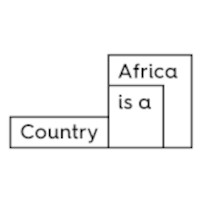The Senegalese director, Safi Faye’s classic 1996 film, Mossane, is a love tragedy and a spiritual quest in Sereer land.
Still from Mossane, 1996.
This post is part of a series from Seneplus on the work of Senegalese filmmakers Safi Faye and Khady Sylla, translated for Africa Is a Country.
Since the 1970s, Safi Faye has displayed her talents as a filmmaker, anthropologist, and ethnologist. Her films draw upon rural life and realities, tackling issues faced daily by farmers as in Kaddu Beykat. In 1990, Faye began to explore fiction when she began creating Mossane, her seminal work.
She released the film in 1996 after a long battle with the French producers of the film. Faye had to wait six years to gain legal rights over her own film. To make Mossane, Faye and her great camera officer, Jürgen Jürges, spent two years in Mbissel, a village in Sereer land and the setting of the film. The film was featured in section ‘Un Certain Regard’ of Cannes Festival for its world premiere.
Mossane tells a love story between Mossane, an adolescent, and Fara, a student. From birth, Mossane is betrothed to Diogoye, an emigrant making a living at the Concorde Lafayette cinema in Paris. Her parents’ rush to tie the marriage unravels with terrible consequences. In Mossane, Faye’s creative genius and great mastery of storytelling are on full display. The main character’s story is compelling, surreal, like a legend. Faye pushes the limits of representation. She addresses stereotypes and colourism in the society that bullies and mocks dark-skinned women and children. The film centers protagonists who are pitch-black, like Mossane (who in the director’s words is “black, so black that she is dark-blue”). Faye shows that it’s possible to film and showcase darker skinned people by ensuring strong research in terms of colors and photography (lighting).
The plot is daring and striking in its showcase of the Pangool, the embodiment of saints and ancestors, visible to a happy few. Drawing from the Sereer imagery (imaginaire), Faye displays religious practices, which were the subject of her thesis at École Pratique des Hautes Études, EPHE, in Paris in 1976. These practices punctuate life in the village, where everybody turns to the big Beep tree to make offerings and prayers in favor of the rainy season.
Mossane and her brother are cursed by a vision their mother had during pregnancy. The brother is ill and his sister, 14, is vetted with the responsibility of his cure. Faye questions the society’s expectations of women and denounces the cruelty against mothers who are held accountable for their children’s fate, while fathers are allowed to be disengaged. Mossane’s father is only audible when claiming his authority (“honor is above feelings,” he says at one point.)
The iconic voice of Yande Codou presages the tragic condition of Mossane. In Faye’s words, “spirits heard that the most beautiful girl was born, Mossane. They then competed with humans to take her away. Ancestors, who departed too soon, also reclaimed her.”
Mossane’s beauty stirs jealousy and envy, fuels private and public discussions. She is at the center of all attention and desires. So she has to marry early—be taken “off the market” to avoid more conflicts and disagreements. Mossane’s fate is sealed because her beauty unsettles the men in the village. Meanwhile, the adolescent is falling in love.
Due to strikes, her cousin Ndiack is back in the village with Fara, a student in agronomy at university. Mossane and Fara fall in love, their complicity and affection is visible. Dibor, a married friend, helps her seduce Fara with tips and secrets on feminine sexuality and pleasure.
The rumors of their love story run in the village, arrive in Mossane’s home, and infuriate Mingue, Mossane’s mother. She is preoccupied by “what relatives would say.” Mossane’s parents take her out of school, potentially calling off her prospects to pursue higher education and be an independent woman. They hasten her union with Diogoye. The marriage is sealed by men, according to traditions, the consent of families and in the absence of the fiancés. The ceremony is beautiful and Diogoye has sent many gifts from France. But the bride is not happy, she is absent, sad, and feels an upsurge of memories. The shy and reserved Moss (Fara’s nickname for her) protests, thrilled by her recent experience with love.
Mossane confronts her parents with a remarkable determination for her young age. She is resolute to proclaim her commitment to Fara, to voice her desires and wants. In the context of village life, where young girls are generally reduced to silence, conditioned to obey and follow, Mossane is inspiring, bold. “I refuse to be the hyena that eats corpses,” she says.
Mossane elopes at night to join Fara at Ndiack’s place. She doesn’t find him, the students are back at university (the strike is over). She leans over a well, alone, in the moonlight before getting on a boat, diving into the night where spirits conquer her.
As predicted in Yande Codou’s song, Roog (the Sereer deity) foresaw the early demise of Mossane, the pearl of Mbissel. She will not live beyond the age of 14.






